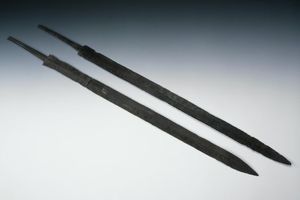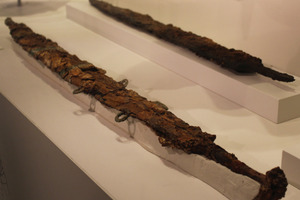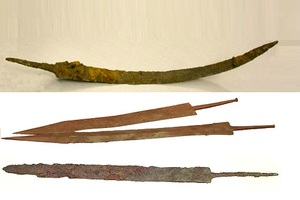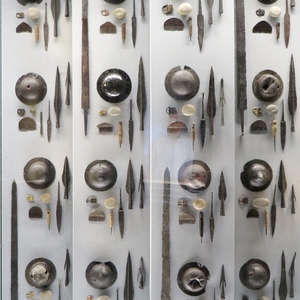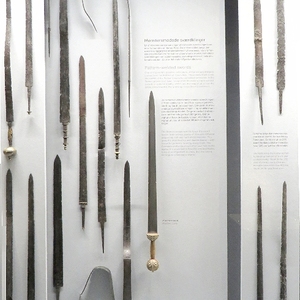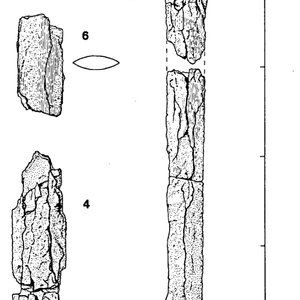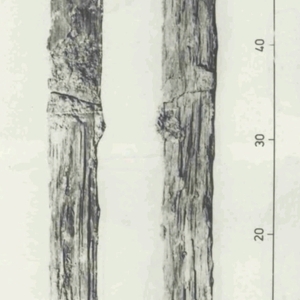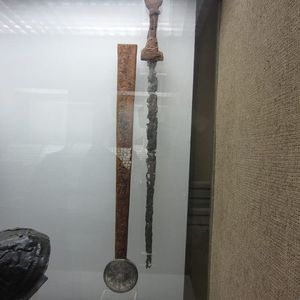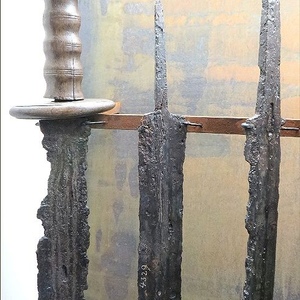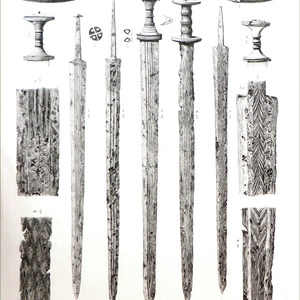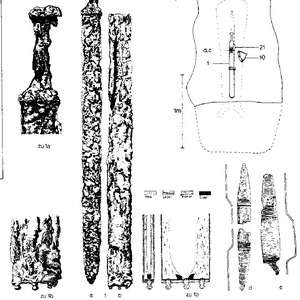Spatha
Spatha (Latin: spatha) – a straight and long double-edged sword, ranging in length from 75 cm to 1 meter. It was used in the Roman Empire from the first century AD up until the 6th-7th centuries AD.
Initially, the spatha was primarily a cavalry weapon in the Roman army, as the gladius was too short for a mounted soldier to effectively strike a dismounted opponent. Moreover, unlike the gladius, the spatha was designed for both thrusting and slashing attacks.
By the beginning of the 3rd century, the spatha had replaced the gladius as the standard infantry sword. The mass production of spathas became possible due to the widespread advances in metallurgy. Military factories of the Dominate period produced spathas in large quantities to meet the needs of the significantly expanded army.
According to the Roman author Vegetius, Roman soldiers were specifically trained to thrust with the spatha (Vegetius, Epitoma Rei Militaris I. 12), although slashing strikes were likely practiced in looser formations.
Active and continuous interactions between the Romans and the Germanic tribes, through both military engagements and trade, as well as mutual assimilation and the recruitment of Germanic auxiliaries, led to the adoption of the spatha by the Germans. These swords later evolved into the Carolingian-type swords during the era of the Migration Period.
Related topics
Equites – Roman Cavalrymen, Soldiers of the Dominate Period, Gladius, Pugio
Literature
- Aleksić M. Some typological features of Byzantine spatha / / Zbornik radova Vizantoloshkog instituta. - 2010. - T. XLVII. - pp. 121-136. - DOI: 10.2298/ZRVI1047121A.
- M.C. Bishop. Spatha. The Roman long sword.
- Simon Timothy James, The Arms and Armour from Dura-Europos, Syria.

 Gallery
Gallery






